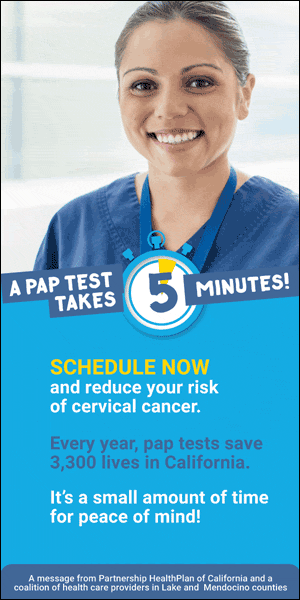

In 2004, Scott Harrison’s life looked great from the outside. He’d spent 10 years in New York City working as a night-club promoter and was driving a BMW and dating models. “But on the inside I was rotting,” he says. “I’d betrayed the faith that my parents brought me track of and picked up all the unsavory behaviors that come along with climbing New York City’s social ladder.
“Just 28 I’d become the worst person I knew,” the now 43-year-old social entrepreneur recalls. Fearing the road he was on can lead to self-destruction, Harrison decided to make a 180-degree turn.
He applied for volunteer opportunities with humanitarian-aid groups, but countless organizations rejected him. Then Harrison had a call from Mercy Ships.
The organization’s floating hospitals provide no-cost, life-saving surgeries for individuals living in countries where medical services are nearly nonexistent. The audience offered to let him serve as a photojournalist in Liberia — a rustic emerging from a 14-year civil war with no running water — in exchange for a $500 monthly donation.
“I said, ‘Sign me up!’” Harrison remembers. “What could be more opposite from a nightclub promoter’s life than living in a country that had been decimated by war, serving alongside these doctors?”
During his two-year stint, Harrison encountered people suffering from leprosy, cleft palates, cataracts, and burns from the war. But it was the lack of access to clean water that left the biggest impression.
“I saw people drinking dirty water and becoming sick from it,” he says. “This was after I had been selling Voss for $10 in nightclubs. Sometimes people wouldn’t even open water because they were drinking champagne.”
That juxtaposition, plus a restored faith, left him feeling a responsibility to do something to change what he had seen. In 2006 he founded charity: water. Since then, the organization has funded nearly 30,000 projects, bringing water that is clean to 8.5 million people in 26 countries. It has also become a leader in restoring public rely upon charitable foundations.
Experience Life | How's charity: water’s model not the same as other nonprofits, and how did you develop it?
SCOTT HARRISON | When I started, I was 30 years old and had never worked in a charity. But the mission was clear: We’re going to bring clean drinking water to everyone on the planet.
As I was talking to everyday people or my buddies, however, I realized there was huge cynicism and skepticism about donating. Everybody appeared to have a horror story about a charity that had mismanaged funds or overpaid its chief executives millions of dollars.
I thought that this was a shame because “charity” means “love.” The action of charity is helping your neighbor in need and getting nothing in return. I thought we needed less cynicism and skepticism people these days engaged in helping their neighbors in need of assistance.
So, as I talked to my friends, I asked, “What would the perfect charity look like for you? How would they handle money? How would they show you your impact?” We came up with a few very simple ideas that turned out to be very different from how most charities behaved, and these changes brought in a lot of new people.
First, we’d use 100 % of every donation we’d ever collect from the public to directly fund water projects.
To ensure that happened, we opened a separate bank account and asked a small group of visionary individuals, business leaders, and entrepreneurs if they’d donate to cover unsexy overhead costs like staff salaries, office rent, phone bills, and also the Epson copy machine.
Once we had funding, we desired to show the wells being drilled, the rainwater-harvesting systems being constructed, and also the clean water flowing. We do this by setting up satellite images of every project on the internet Earth and Google Maps so people can see that they exist. We’ve also started wiring a lot of our wells with sensors to ensure that they’ll tell us exactly how much water was flowing the day before.
Finally, we believed that our work must be culturally appropriate to be sustainable. We're able to raise money and awareness, but the work had to be done by local hydrologists, technicians, drivers, and geologists, and they’d obtain the credit.
EL | In your book, Thirst: A tale of Redemption, Compassion, and a Mission to Bring Clean Water to the World, you mention that your identity was often tied to your work. Is that still true?
SH | When you’re on a social mission, it can be difficult to split up your personal identity from your life’s work. I talk about a period of time when after having eight years of consecutive growth, we had our first year of not raising just as much money as the prior year. I took it really hard because I felt like I’d let people down.
But I learned through that process that nothing goes up forever. You've great years and some where you need to reinvent or pivot.
This experience also showed me that I was more than just the best choice of charity: water. I had been a father, husband, and son. That realization solved the problem look at the bigger picture and see that we didn’t compromise our values or integrity being an organization, and I hadn’t like a person. We just didn’t raise as much money, and the downturn gave us an opportunity to figure out why and to solve the issue.
EL | How did you solve that fundraising challenge?
SH | We built a brand-new community of monthly givers known as the Spring. We saw people subscribing to Netflix, HBO GO, and Spotify each month and wondered if we could get a community of people to do exactly the same for clean drinking water.
So we invited people to do it. We explained it costs us $30 a month to get clean water to one human. That’s only one dollar a day, which is less than a cup of coffee.
Over 33,000 people from 104 countries have joined. They include those who are donating their pensions, college kids who are donating 10 bucks, and small children who are giving their allowance to their parents to support what we do. It’s an amazing community born from what seemed like a failure but was actually an opportunity to grow and try something new.
EL | How do you prioritize yourself and your family with the travel and commitments that charity: water requires?
SH | My wife was really a co-conspirator in building charity: water, so she understands the job. She’s traveled to Ethiopia with me 13 times, and it’s something we’re also trying to involve our kids in. My 4-year-old son has been on about 40 flights already. This allows him to see what I do for a living and why I believe the work is so important. It also helps integrate my work into my entire life and vice versa.
We live in a very small apartment in New York City that’s a seven-minute walk to work. This cuts down commuting time, allowing me to spend more time with my family in the zoo or museums.
EL | How has serving others influenced your ideas about leadership?
SH | I never thought of myself as a leader, but as a promoter. I’d become successful promoting this idea that getting beyond the velvet rope and inside a club and sitting using the right people sipping expensive champagne meant your life had meaning.
I switched to promoting something different, but it’s still telling a story. Now I promote the concept that if you’re looking for ways to give your time and money to end suffering around the world, then joining this community that helps bring people clean water can give your life more meaning. So far, over a million people have heeded the phone call and joined us in solving this issue.













